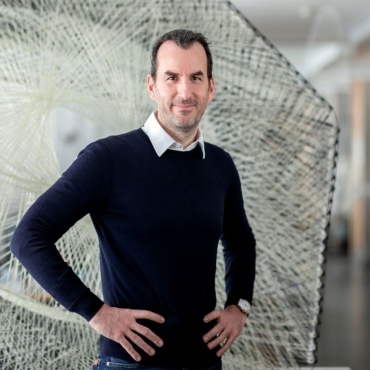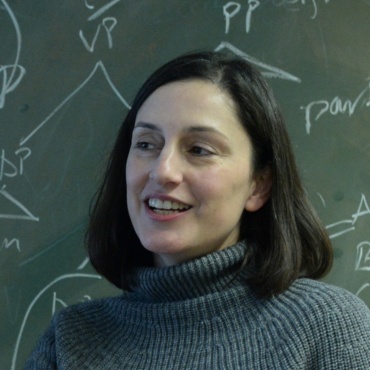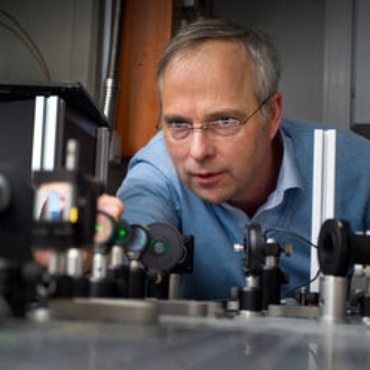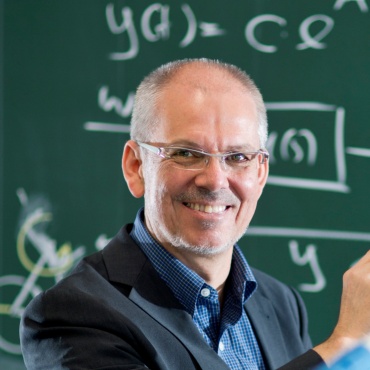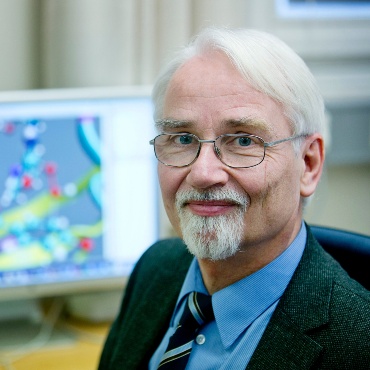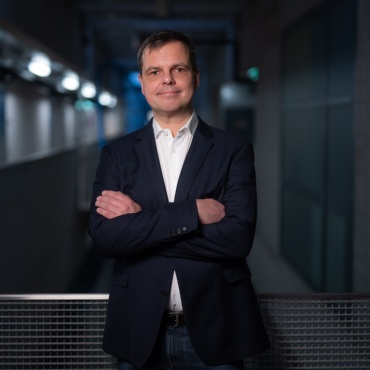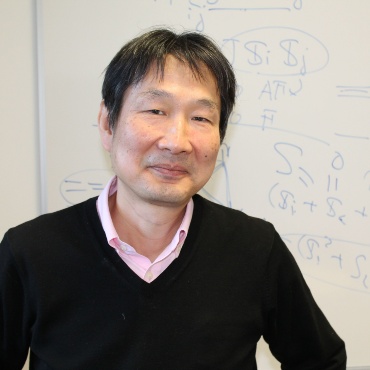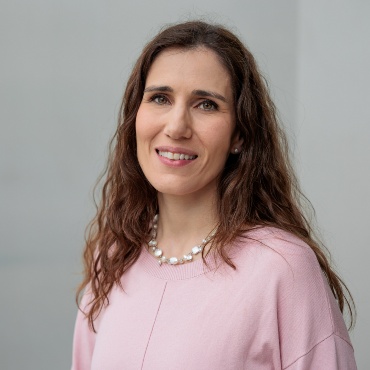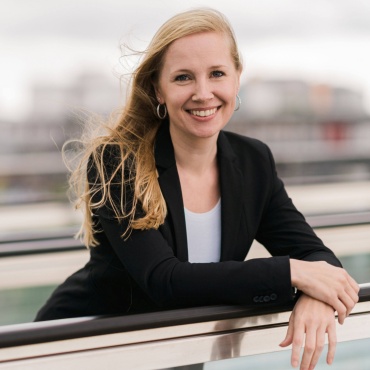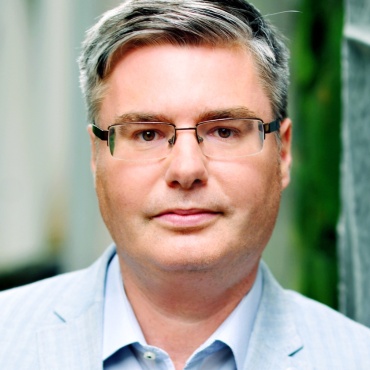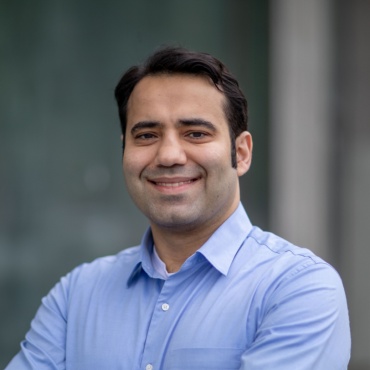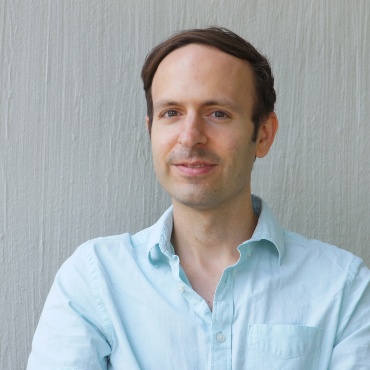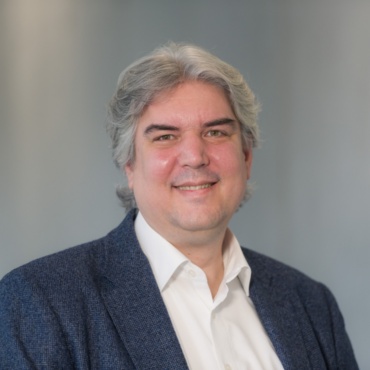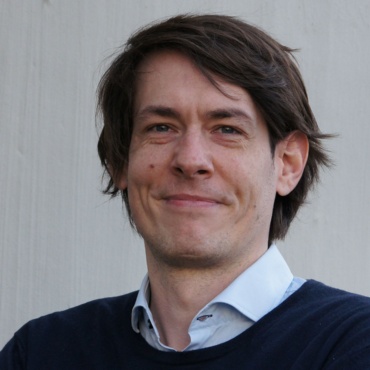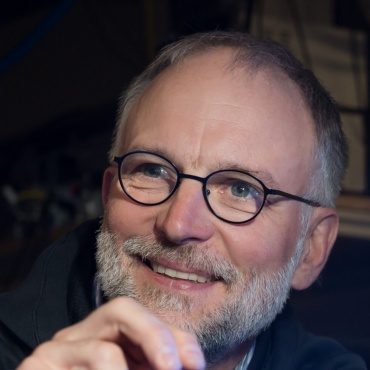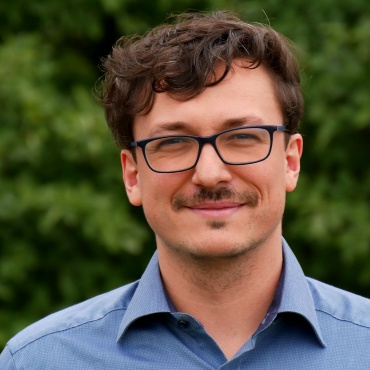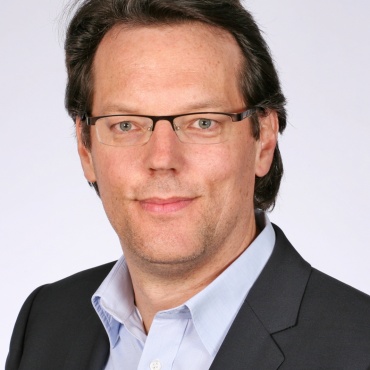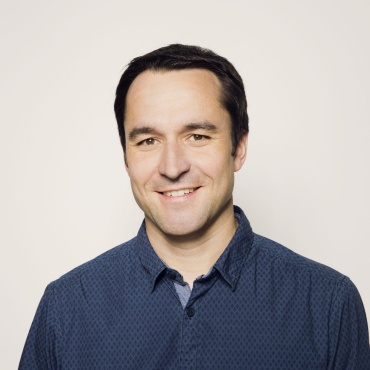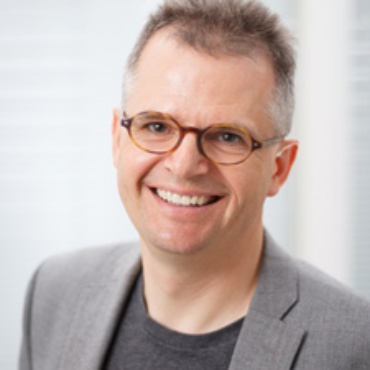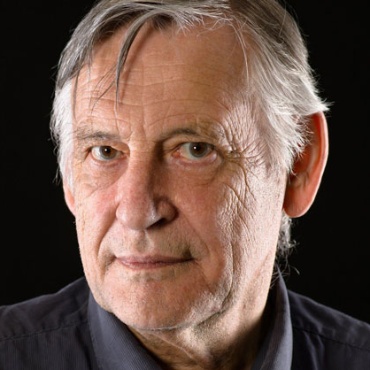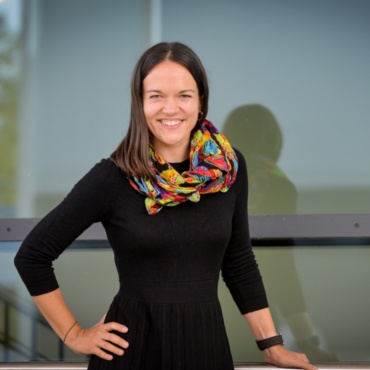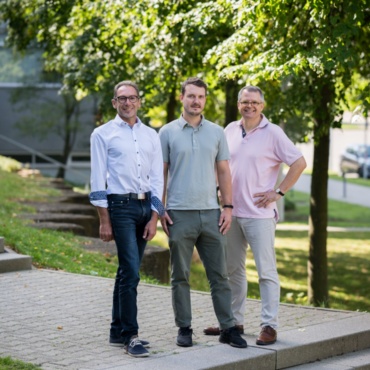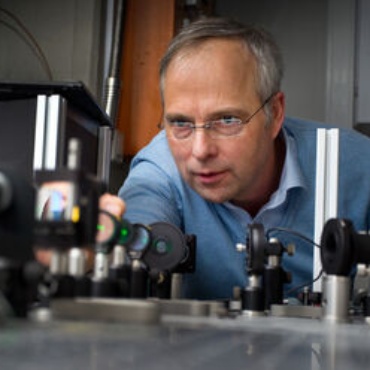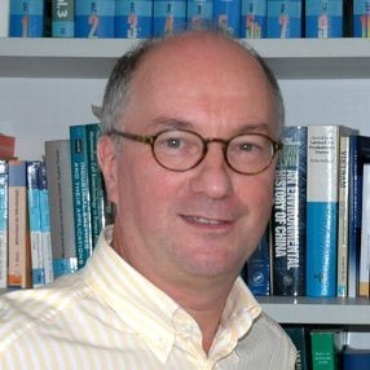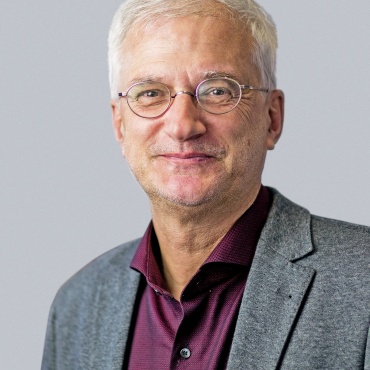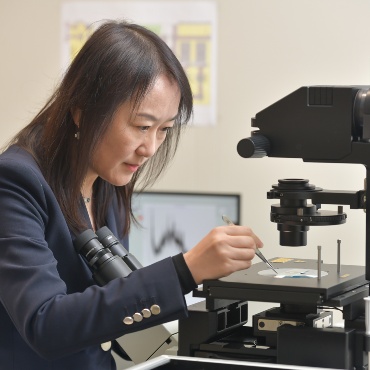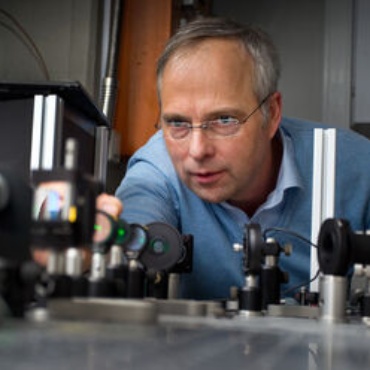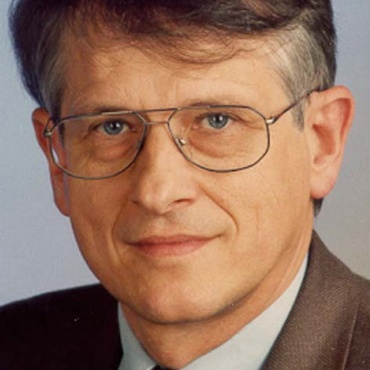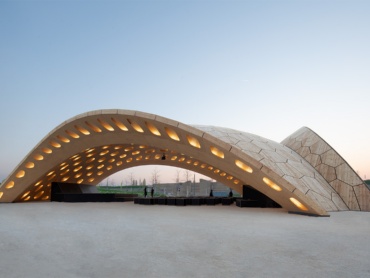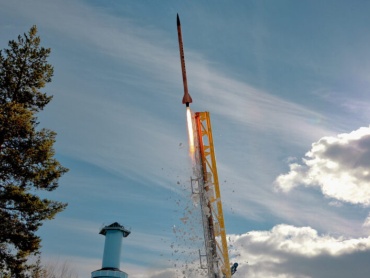Whether the Leibniz Prize, ERC grants, doctoral prizes or advisory activities in important (decision-making) committees: Each year, numerous researchers at the University of Stuttgart successfully compete to demonstrate their expertise or gain funding and honor. The awards honor outstanding, often particularly creative research achievements and have a special status in both the German and the international scientific community. The award-winners are presented on this page.
Research awards: Apply now!
Are you a researcher at the University of Stuttgart? How can doctoral researchers, post-doc students, or (junior) professors receive recognition for their research? Find the right research award for you [de] and apply.
Gottfried Wilhelm Leibniz Prizewinners
-
The Gottfried Wilhelm Leibniz Prize of the German Research Foundation (DFG) is Germany’s most important research award that is often termed the “German Nobel Prize.” The prize comes with a monetary award of up to 2.5 million euros and nominations for it can only be made by third parties. Since 2000, five prizewinners have been awarded the Leibniz Prize at the University of Stuttgart.
Alexander von Humboldt Professorships
The Alexander von Humboldt Professorship of the Alexander von Humboldt Foundation is Germany’s most highly endowed international research award, which honors internationally leading scientists and scholars who have previously worked abroad. It gives German universities the opportunity to attract top international researchers to their institutions, to offer internationally competitive framework conditions, and to raise their profile in the face of global competition.
Current ERC-Grants
The European Research Council (ERC) funds groundbreaking, visionary research and is oriented toward top-flight researchers at various career stages. Success in ERC grants has come to be recognized as a hallmark of international competitiveness for European universities. The ERC contains the following funding schemes: ERC Starting Grant, ERC Consolidator Grant, ERC Advanced Grant, ERC Synergy Grant and ERC Proof of Concept.
Other distinguished researchers
*No longer at the University of Stuttgart.
Awards of the past years at a glance
| Person | Price / award | Year | (Awarding) institution | Further information |
|---|---|---|---|---|
| Laura Na Liu | ERC Advanced Grant | 2025-2030 | European Research Council | |
| Blazej Grabowski | ERC Advanced Grant | 2025-2030 | European Research Council | |
| Dr. Johannes Rittmann | Science Award | 2025 | Deutsche Gesellschaft für Zerstörungsfreie Prüfung (DGZfP) | |
| Carolin Brenner | Südwestmetall Förderpreis | 2025 | Verband der Metall- und Elektroindustrie Baden-Württemberg e. V. (Südwestmetall) | |
| Sibylle Baumbach | ERC Advanced Grant | 2024–2029 | European Research Council (ERC) | |
| Stefan Weber | ERC Consolidator Grant | 2024–2029 | Europäischer Forschungsrat | |
| Michael Pradel | ERC Proof Concept Grant | 2024–2026 | European Research Council (ERC) | |
| Achim Menges | Max Planck Fellow | 2024-2029 | Max-Planck-Institut | |
| Steffen Staab | ACM Fellow | 2024 | Association for Computing Machinery (ACM) | |
| Jan Knippers | New member of the Academy of Arts, Berlin | 2024 | Academy of Arts, Berlin | |
| Silke Wieprecht | Bayerischen Staatsmedaille | 2024 | Bayerisches Staatsministerium für Umwelt und Verbraucherschutz | |
| Julian Berberich, Julian Karst, Viktor Zaverkin | Bürkert University Prize | 2024 | Stiftung Universität Stuttgart, gefördert durch die Christian Bürkert Stiftung gGmbH | |
| Joris van Slageren | Henriette Herz-Scout | 2024 | Alexander von Humboldt-Stiftung | |
| Andreas Bulling | Henriette-Herz-Scout | 2024 | Alexander von Humboldt-Stiftung | |
| Sofina Dembruk | Prix Germaine de Staël | 2024 | Frankoromanistikverband together with French Embassy in Germany | |
| Christian Hölzl | Quantum Future Award, second place / doctoral category | 2024 | Federal Ministry of Education and Research (BMBF) | |
| Harald Giessen | Robert Wichard Pohl Prize | 2024 | German Physical Society | |
| Hans Kamp | Rolf Schock Prize | 2024 | Royal Swedish Academy of Sciences | |
| Michael Saliba | Stuart R. Wenham Young Professional Award | 2024 | Photovoltaic Specialists Conference | |
| Kathrin Pollmann | Südwestmetall Sponsorship Award | 2024 | Arbeitgeberverband Südwestmetall | |
| Jörn Birkmann | Environmental und Sustainability Award | 2024 | Bundesdeutscher Arbeitskreis für Umweltbewusstes Management (BAUM) e.V. | |
| Sara Kleindienst | ERC Starting Grant | 2023–2028 | European Research Council (ERC) | |
| Katharina Hölzle | Technology Officer | 2023–2026 | Baden-Württemberg Ministry of Economic Affairs, Labour and Tourism | |
| Tim Langen | ERC Proof of Concept | 2023–2025 | European Research Council (ERC) | |
| Deven Estes | Fulbright-Cottrell Award | 2023–2025 | Deutsch-Amerikanische Fulbright Kommission | |
| Giulia Becatti | Marie Sklodowska-Curie-Postdoktorandenstipendium | 2023–2025 | Europäische Kommission | |
| Michael Pradel | ACM SIGSOFT Distinguished Artifact | 2023 | ACM SIGSOFT International Symposium on Software Testing and Analysis (ISSTA) | |
| Michael Pradel | ACM SIGSOFT Distinguished Paper | 2023 | ACM SIGSOFT International Symposium on Software Testing and Analysis (ISSTA) | |
| Dieter Schmalstieg | Alexander von Humboldt Professorship | 2023 | Alexander von Humboldt Stiftung | |
| Franziska Hild | Amelia Earhart Fellowship Award | 2023 | Zonta International | |
| Maren Scheel | Bertha-Benz-Preis | 2023 | Daimler und Benz Stiftung | |
| Hans-Christian Möhring | Best Paper Award | 2023 | International Journal of Automation Technology (IJAT) | |
| Svenja Stiber | Boysen Dissertation Award | 2023 | Friedrich und Elisabeth Boysen-Stiftung | |
| Steffen Staab | Fellow of the Asia-Pacific AI Association (AAIA) | 2023 | AAIA | |
| Laura Na Liu | Fellow of the American Physical Society | 2023 | American Physical Society | |
| Laura Na Liu | Fellow of the Royal Society of Chemistry | 2023 | Royal Society of Chemistry | |
| Jennifer Oevermann | Förderpreis der Stauferstiftung | 2023 | Stauferstiftung | |
| Michael Saliba, Antonio Abate, Steve Albrecht und Eva Unger | Helmholtz High Impact Award | 2023 | Hermann von Helmholtz-Gemeinschaft | |
| Michael Saliba | Kavli-Stiftung | 2023 | MRS Fall Meeting | |
| Martin Dressel | Kenneth J Button Prize | 2023 | International Society of Infrared, Millimeter, and Terahertz Waves | |
| Achim Menges | Leibniz Prize | 2023 | Deutsche Forschungsgemeinschaft e.V. (DFG) | |
| Michael Saliba | Rising Star Award | 2023 | Materials Today | |
| Tilman Pfau | Senior BEC Award | 2023 | TOPTICA Photonics AG | |
| Martin Werz | Suedwestmetall Advancement Award | 2023 | Verband der Metall- und Elektroindustrie Baden-Württemberg e. V. (Südwestmetall) | |
| Maren Scheel | Suedwestmetall Advancement Award | 2023 | Verband der Metall- und Elektroindustrie Baden-Württemberg e. V. (Südwestmetall) | |
| Ralf Küsters | Test-of-Time Award | 2023 | ACM/IEEE Symposium on Logic in Computer Science | |
| Amrei Bahr | Top 40 unter 40 | 2023 | Wirtschaftsmagazin Capital | |
| Thomas Bauernhansl | UNIPRENEURS Award | 2023 | Initiative UNIPRENEURS | |
| Markus Grözing, Jakob Finkbeiner, Raphael Nägele | Zukunftspreis | 2023 | Private Stiftung Ewald Marquardt | |
| André Bächtiger | ERC Advanced Grant | 2022–2027 | European Research Council (ERC) | |
| Oliver Röhrle | ERC Advanced Grant | 2022–2027 | European Research Council (ERC) | |
| Michael Saliba | ERC Starting Grant | 2022–2027 | European Research Council (ERC) | |
| Mathias Scheurer | ERC Starting Grant | 2022–2027 | Europäischer Forschungsrat (ERC) | |
| Steffen Staab | Wissenschaftliches Mitglied des Ausschusses für wissenschaftliche Bibliotheken und Informationssysteme | 2022–2025 | Deutsche Forschungsgemeinschaft e.V. (DFG) | |
| Inmaculada Aleixos Borrás | Marie Sklodowska-Curie post-doctoral fellowship | 2022–2024 | Europäische Kommission | |
| Markus Friedrich | Vorsitz Wissenschaftlicher Beirat beim Bundesminister für Digitales und Verkehr | 2022–2023 | Bundesministerium für Digitales und Verkehr | |
| Dr. Stephan Lang | 3rd place Otto F. Scharr Prize for Energy Technology | 2022 | Otto F. Scharr-Stiftung | |
| Michael Pradel | ACM Distinguished Member | 2022 | Association for Computing Machinery (ACM) | |
| Michael Pradel | ACM SIGSOFT Distinguished Paper | 2022 | ||
| Maren Scheel | Amelia Earhart Fellowship Award | 2022 | Zonta International | |
| Christian Karczewski | Best Paper Award | 2022 | The 16th international conference on heat transfer, fluid mechanics and thermodynamics (hefat) and editorial board of applied thermal engineering (ate) | |
| Frank Wendel | Best Paper Award | 2022 | IEA DHC | |
| Yuanchen Wang | Best Presentation Award | 2022 | YRSB22 iiSBE Forum of Young Researchers in Sustainable Building | |
| Amrei Bahr | Communicator award | 2022 | Deutsche Forschungsgemeinschaft e.V. (DFG) | |
| Stefan Wagner | Distinguished Contributor | 2022 | IEEE Computer Society Distinguished Contributor Recognition Program | |
| Frank Allgöwer | Reinhart Koselleck-Project | 2022 | Deutsche Forschungsgemeinschaft e.V. (DFG) | |
| Andrew Clark | Walter-Flemming-Prize | 2022 | Deutsche Gesellschaft für Zellbiologie (DGZ) | |
| Audrey Dobbins | iER-Preis - Kategorie Dissertationen - 1. Platz | 2022 | Gesellschaft für intelligente Energie- und Ressourcennutzung e.V. | |
| Nils Seckinger | iER-Preis - Kategorie Dissertationen - 2. Platz | 2022 | Gesellschaft für intelligente Energie- und Ressourcennutzung e.V. | |
| Dimitrij Chudinzow | iER-Preis - Kategorie Dissertationen - Sonderpreis | 2022 | Gesellschaft für intelligente Energie- und Ressourcennutzung e.V. | |
| Tim Langen |
ERC Starting Grant ERC Proof of Concept Grant |
2021–2026 2023–2025 |
European Research Council (ERC) | |
| Tilman Pfau | ERC Advanced Grant | 2021–2026 | European Research Council (ERC) | |
| Blazej Grabowski | ERC Consolidator Grant | 2021–2025 | European Research Council (ERC) | |
| Marcel Pfeiffer | ERC Starting Grant | 2021–2025 | European Research Council (ERC) | |
| Arijit Singha Hazari | Marie Sklodowska-Curie post-doctoral fellowship | 2021–2023 | Europäische Kommission | |
| Jibesh Patra & Michael Pradel | ACM SIGSOFT Distinguished Paper Award | 2021 | ACM Joint European Software Engineering Conference and Symposium on the Foundations of Software Engineering (ESEC/FSE) | |
| Katharina Heck | AQUA Study Prize | 2021 | AQUA Foundation | |
| Amin Ebrahim Bakhshipour | AQUA Study Prize | 2021 | AQUA Foundation | |
| Jan-Philipp Günther | Agnes-Pockels-Promotionspreis | 2021 | DBG Deutsche Bunsen-Gesellschaft für physikalische Chemie e.V. | |
| Zuardin Akbar & Thomas Wortmann | City Learn Challenge | 2021 | ||
| Hanaa Dahy | Focus Open 2021 Silver, Internationaler Designpreis BW für Bioprofile | 2021 | Design Center Baden-Württemberg | |
| Harald Giessen & Alois Herkommer & Simon Thiele | Gips Schüle Research Award | 2021 | Gips-Schüle Stiftung | |
| Prashanth Srinivasan | Humboldt-Fellowship | 2021 | Alexander von Humboldt-Stiftung | |
| Sebastian Brandhofer & Daniel Bhatti & Jelena Mackeprang | IBM Quantum Open Science Prize | 2021 | IBM | |
| Piotr Baszynski | IntCDC "Blue Sky" Project Grant | 2021 | Cluster of Excellence IntCDC/ University of Stuttgart | |
| Carsten Ellwein | IntCDC Best Publication Award 2021 | 2021 | Cluster of Excellence IntCDC/ University of Stuttgart | |
| Larissa Born | Manfred Hirschvogel Prize | 2021 | Frank Hirschvogel Stiftung | |
| Johanna Bruckner | Margarete-von-Wrangell Habilitationsstipendium | 2021 | Landesregierung Baden-Württemberg | |
| Achim Menges, Jan Knippers & Teams & Students ITECH | MaterialPREIS2021 | 2021 | raumprobe OHG | |
| Achim Menges, Jan Knippers | MaterialPREIS2021 | 2021 | raumprobe OHG | |
| Lena Lambers, Tim Ricken | Posterpreis | 2021 | 23rd CFT (Chirurgische Forschungstage) | |
| Biprajit Sarkar | Prize of the Indian Chemical Society | 2021 | Indian Chemical Society | |
| Frank Wendel | Rafael Bointner Award | 2021 | IEWT / TU Wien | |
| Andrea Thom | Runner up prize for Best Presentation by Junior Female Researchers | 2021 | Female Researchers Chapter (FRC) of the International Association for Computational Mechanics (IACM) | |
| Stefan Manuel Schaut | Suedwestmetall Advancement Award | 2021 | Verband der Metall- und Elektroindustrie Baden-Württemberg e. V. (Südwestmetall) | |
| Hanaa Dahy | Tamayouz Award for Women in Architecture and Construction | 2021 | Tamayouz Excellence Award | |
| Erik Stehle | fib PhD Symposium Award | 2021 | International Federation for Structural Concrete (fib) | |
| Jörn Birkmann | ERC Synergy Grant | 2020–2027 | European Research Council (ERC) | |
| Thomas Ertl | Wissenschaftliches Mitglied des Auswahlausschusses für den Heinz Maier-Leibnitz-Preis | 2020–2026 | Deutsche Forschungsgemeinschaft e.V. (DFG) | |
| Michael Pradel |
ERC Starting Grant ERC Proof of Concept Grant |
2020–2025 2024–2026 |
European Research Council (ERC) | |
| Hans Christian Möhring | Wissenschaftliches Mitglied des Bewilligungsausschusses für die Sonderforschungsbereiche | 2020–2025 | Deutsche Forschungsgemeinschaft e.V. (DFG) | |
| Hans Christian Möhring | Wissenschaftliches Mitglied des Senatsauschusses für die Sonderforschungsbereiche | 2020–2025 | Deutsche Forschungsgemeinschaft e.V. (DFG) | |
| Manfred Bischoff | Mitglied des Fachkollegiums Bauwesen und Architektur, Angewandte Mechanik, Statik und Dynamik | 2020–2024 | Deutsche Forschungsgemeinschaft e.V. (DFG) | |
| Alexander Verl | Mitglied des Fachkollegiums Produktionstechnik, Produktionsautomatisierung | 2020–2024 | Deutsche Forschungsgemeinschaft e.V. (DFG) | |
| Michael Buchmeiser | Mitglied im Senatsausschuss der DFG Graduiertenkollegs | 2020–2024 | Deutsche Forschungsgemeinschaft e.V. (DFG) | |
| Michael R. Buchmeiser | Wissenschaftliches Mitglied des Bewilligungsausschusses für die Graduiertenkollegs | 2020–2024 | Deutsche Forschungsgemeinschaft e.V. (DFG) | |
| Majid Hassanizadeh | ERC Proof of Concept | 2020–2022 | European Research Council (ERC) | |
| Li Zhang | IntCDC Best Publication Award 2020/2021 | 2020/ 2021 | Cluster of Excellence IntCDC/ University of Stuttgart | |
| Rainer Helmig | AGU Fellow 2020 | 2020 | American Geophysical Union | |
| Martina Baggio, Ariane Exle, Karin Schlottke | Amelia Earhart Award | 2020 | Zonta International | |
| Marvin Muñoz Barón, Marvin Wyrich, Prof. Stefan Wagner | Best Full Paper Award | 2020 | The 14th ACM/IEEE International Symposium on Empirical Software Engineering and Measurement | |
| Jinghua Yu, Stefan Wagner, Feng Luo | Best Paper Award | 2020 | EAI International Conference on Cognitive Computing and Cyber Physical Systems | |
| Tiffany Cheng & Achim Menges | Best Poster Prize | 2020 | Baden-Württemberg Stiftung | |
| Elias Klemm | DECHEMA-Medaille | 2020 | DECHEMA Gesellschaft für Chemische Technik und Biotechnologie e.V. | |
| Achim Menges & Team, Jan Knippers & Team | DigitalFUTURES World Award | 2020 | DigitalFUTURES Konferenz- und Workshop-Komitee an der Tongjii University | |
| Jannik Haas | Boysen Dissertation Award | 2020 | Friedrich und Elisabeth Boysen-Stiftung | |
| Tobias Willmann | EFB project prize | 2020 | Europäische Forschungsgesellschaft für Blechbearbeitung e.V | |
| Hans-Joachim Wunderlich | ETS Distinguished Service Award | 2020 | IEEE European Test Symposium | |
| Nina Engelhardt, Serena Gambarelli, Linus Stegbauer | Eliteprogramm für Postdoktorand*innen | 2020 | Baden-Württemberg Stiftung | |
| Ferran Giones, Alexander Brem | Emerald Literati Award | 2020 | Emerald Publishing | |
| Hidenori Takagi | Eugen und Ilse Seibold-Preis | 2020 | Deutsche Forschungsgemeinschaft e.V. (DFG) | |
| Jörg Wrachtrup | Europhysics Prize Award | 2020 | Europäische Physikalische Gesellschaft | |
| Simone Rehm | Fellow der Gesellschaft für Informatik | 2020 | Gesellschaft für Informatik e.V. (GI) | |
| Manuel Clauss | Forschungspreis des Arbeitskreis Kohlenstoff (AKK) | 2020 | Deutsche Keramische Gesellschaft (DKG) e.V. | |
| Clarissa Dietrich | Glenn H. Brown Preis | 2020 | International Liquid Crystal Society (ILCS) | |
| Achim Menges, Oliver Bucklin, Oliver Krieg | Green Concept Award | 2020 | Green Future Club | |
| Achim Menges & Team, Jan Knippers & Team | Holzbau Plus-Award | 2020 | Bundesministerium für Ernährung und Landwirtschaft | |
| Ingo Hartenbach | Teaching award | 2020 | University of Stuttgart | |
| Wolfgang Nowak | Teaching prize | 2020 | Faculty 2 | |
| Tiffany Cheng, Dylan Wood, Xiang Wang, Philip Yuan, Achim Menges | Living Machines 2020: 1st Best Paper Award | 2020 | Living Machines Conference | |
| Tanja Blascheck | Margarete-von-Wrangell Habilitationsstipendium | 2020 | Landesregierung Baden-Württemberg | |
| Bernhard Hauer | Reinhart Koselleck-Projekt | 2020 | Deutsche Forschungsgemeinschaft e.V. (DFG) | |
| Martin Dazer | Suedwestmetall Advancement Award | 2020 | Verband der Metall- und Elektroindustrie Baden-Württemberg e. V. (Südwestmetall) | |
| Jan Meisner | Wilhelm-Ostwald-Nachwuchspreis | 2020 | Gesellschaft Deutscher Chemiker e.V. (GDCh) | |
| Roman Flatau | iER-Preis - Kategorie Dissertationen - 1. Platz | 2020 | Gesellschaft für intelligente Energie- und Ressourcennutzung e.V. | |
| Christian Senger, Johannes Nöldeke | stuvus special prize for excellent teaching | 2020 | stuvus | |
| Andreas Bulling | ERC Starting Grant | 2019–2024 | European Research Council (ERC) | |
| Mohammad Tourian, Nico Sneeuw, J.T. Reager | Publication Prize | 2019/ 2020 | University of Stuttgart | |
| Thomas Ertl | IEEE Visualization Career Award | 2019 | IEEE Technical Committee on Visualization and Graphics (VGTC) | |
| Tim Langen | Rudolf-Kaiser-Preis | 2019 | Rudolf-Kaiser-Stiftung | |
| Laura Na Liu | Rudolf-Kaiser-Preis | 2018 | Rudolf-Kaiser-Stiftung | |
| Jörg Wrachtrup | ZEISS Research Award | 2016 | ZEISS | |
| Artemis Alexiadou* | Leibniz Prize | 2014 | Deutsche Forschungsgemeinschaft e.V. (DFG) | |
| Hidenori Takagi | Alexander von Humboldt Professorship | 2013 | Alexander von Humboldt Stiftung | |
| Jörg Wrachtrup | Leibniz Prize | 2012 | Deutsche Forschungsgemeinschaft e.V. (DFG) | |
| Frank Allgöwer | Leibniz Prize | 2004 | Deutsche Forschungsgemeinschaft e.V. (DFG) | |
| Hans-Joachim Werner* | Leibniz Prize | 2000 | Deutsche Forschungsgemeinschaft e.V. (DFG) | |
| Klaus von Klitzing* | Nobel Prize in Physics | 1985 | Nobel Foundation |
Excellent conditions for research, studies and cooperation
You might also be interested in
[Photos: ICD/ITKE/University of Stuttgart, HyEnD / University of Stuttgart]
Kontakt
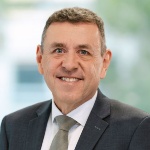
Manfred Bischoff
Prof. Dr.Vice Rector for Research and Sustainable Development
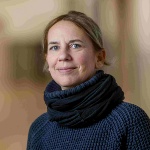
Nicole Bach
Research Consultant


